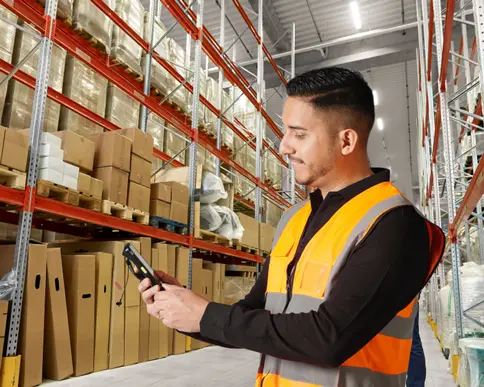Brief Introduction
Mobile computers, which integrate data collection, processing, and transmission, are revolutionizing industries like retail, logistics, and healthcare. Today, we'll uncover how they work, from core principles to real-world applications.

1. What Are Mobile Computers?
Mobile computers are a compact, multifunctional device equipped with a touchscreen, keypad, camera, and scanner. It connects via wireless networks to enable instant data transfer, supporting operations like data entry, querying, transmission, and storage. These devices have become essential tools for digital management in businesses.
2. Key Hardware Components
① Central Processing Unit (CPU)
The brain of mobile computers, the CPU handles all computing tasks. Most mobile computers use power-efficient ARM-based processors to ensure fast response times and multitasking capabilities.
② Memory & Storage
To enable quick data access, mobile computers come with ample RAM and internal storage. Many also support expandable storage via MicroSD cards for added flexibility.
③ Display Screen
A high-resolution touchscreen provides a clear interface for user interaction. Rugged models often feature scratch-resistant and waterproof screens for durability in harsh environments.
④ Input Methods
In addition to touch input, many mobile computers include physical or numeric keypads for easier operation in demanding conditions. Built-in barcode scanners allow fast data capture, improving efficiency.
⑤ Wireless Connectivity
Most mobile computers support Wi-Fi, Bluetooth, and cellular networks (4G/5G), ensuring seamless data synchronization with cloud servers or enterprise systems for real-time updates.
⑥ Battery
Long-lasting lithium batteries paired with intelligent power management extend usage time, making mobile computers reliable for all-day operations.
3. How Mobile Computers Work: Step-by-Step
① Data Capture
Users scan barcodes or manually input information (e.g., product IDs, inventory counts).
② Data Transmission
Mobile computers send collected data to a central server or cloud system via wireless networks.
③ Data Processing
Backend software analyzes the data and generates reports or actionable insights.
④ Feedback & Action
Processed results are relayed back to mobile computers, enabling users to make decisions or take next steps.
4. Practical Applications
Retail
Inventory management, price checks, and customer service — mobile computers streamline operations with instant scanning and updates.
Logistics & Warehousing
Real-time tracking of shipments, efficient stocktaking, and automated inbound/outbound processes reduce errors and save time.
Healthcare
Patient records, medication tracking, and asset management improve accuracy and safety in hospitals and pharmacies.
Manufacturing
Production monitoring, equipment maintenance, and quality control enhance efficiency on factory floors.
Founded in 2002, SEUIC Technologies Co., Ltd. has been committed to grasping core technologies, enhancing technological innovation, providing excellent self-owned brand products, including mobile computers, RFID readers, tablets, barcode scanners and fixed readers. With highly reliable products and efficient services, our products have been widely used in manufacturing, retail, logistics & transportation, healthcare and other industries. We provide frontline workers more durable real-time data collection tools, helping you do more thereby to catapult your productivity to the next level.- The Critical Role of Mobile Computers in Warehouse Logistics2025-06-25
- Seuic Mobile Computers: Multi-Scenario Efficiency Solutions2025-06-24
- Operation Guide and Industry Applications of Seuic Mobile Computers2025-06-23
- How to Choose Mobile Computers for Your Industry Needs2025-06-20
- Mobile Computers: The All-in-One Tool from Data Collection to Industry Implementation2025-06-19